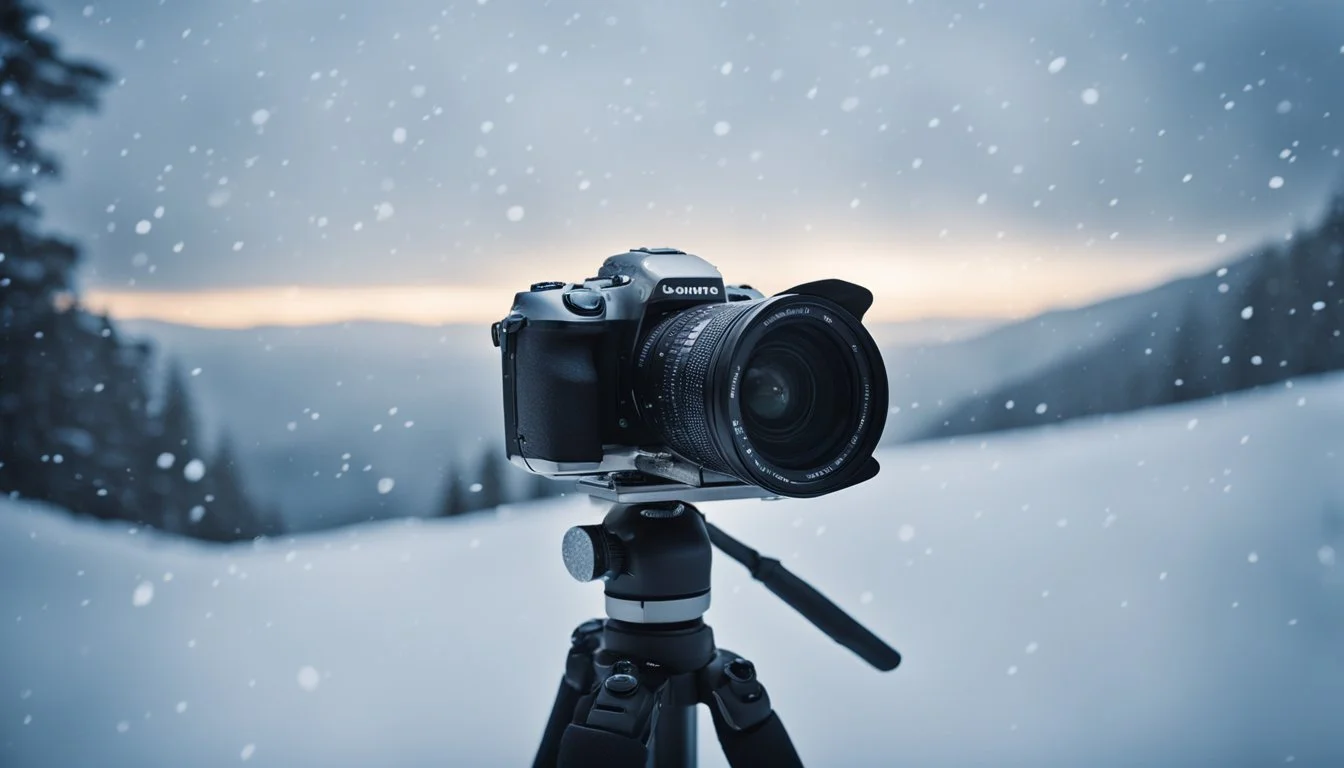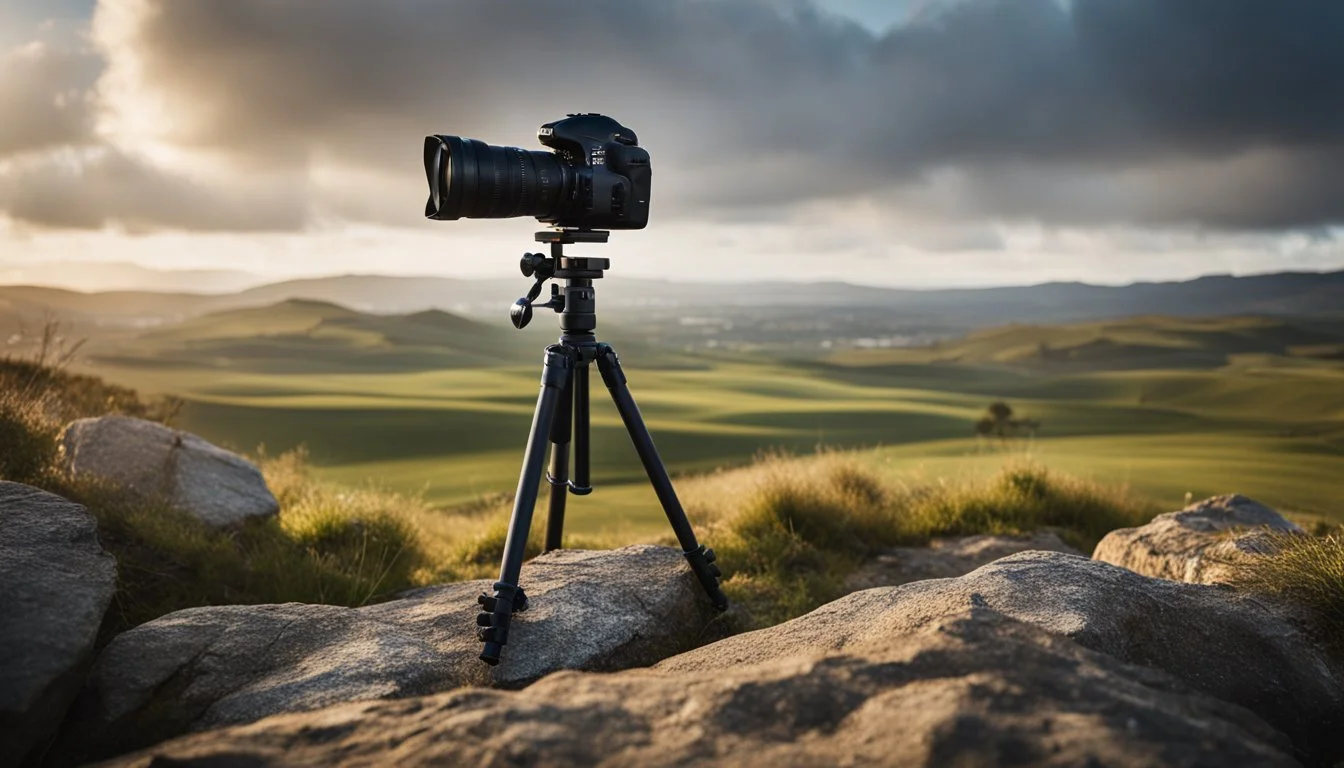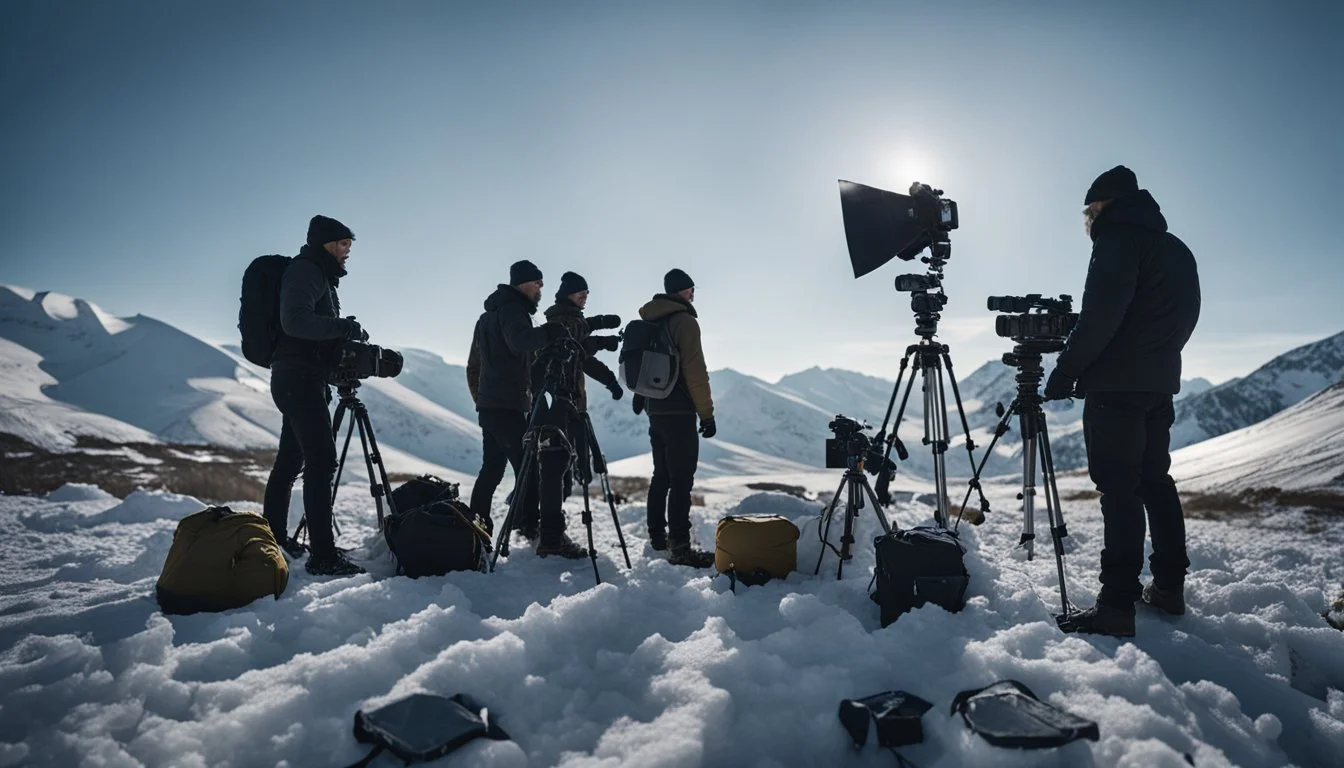10 Essential Tips for Filming in Extreme Weather Conditions
Master Your Shots
Filming in extreme weather conditions presents unique challenges and demands special preparation to ensure both the safety of the equipment and the quality of the footage. These conditions can range from freezing temperatures to scorching heat or heavy precipitation. Understanding how to effectively manage these elements can make the difference between a successful shoot and a ruined project.
For filmmakers, knowing the right strategies and tools to use is essential for maintaining both the performance of their gear and the integrity of their work. Whether facing icy winds or torrential rains, having a solid plan can prevent technical issues and capture stunning visuals. This article will guide you through practical tips to help navigate the complexities of shooting in extreme weather.
1) Check Equipment Durability
When planning to film in extreme weather, it's crucial to assess the durability of all your equipment. Not all cameras and accessories are built to withstand harsh conditions. Ensure your camera is weather-sealed to protect against moisture, dust, and temperature changes.
Camera bodies and lenses with weather-sealed features are essential for shooting in rain, snow, or windy environments. Check the manufacturer’s specifications to confirm these protections.
Battery performance can degrade in cold temperatures. It's wise to carry extra batteries and keep them warm in your pockets. Cold weather can quickly drain power, leaving you without a working camera.
Protective covers and cases can provide an additional layer of security. These are especially useful in rainy or sandy conditions. Investing in quality covers can prevent significant damage and protect sensitive components.
In high heat, avoid leaving your camera in direct sunlight for extended periods. Prolonged exposure can cause overheating and damage electronic parts. Use reflective or insulated covers to reduce heat absorption.
Regularly inspect and maintain your equipment to identify any wear and tear before heading out. Check for loose parts, damaged seals, or signs of corrosion. A well-maintained setup ensures reliability in challenging weather conditions.
2) Invest in Weatherproof Gear
High-quality weatherproof gear can make a significant difference when filming in extreme conditions.
First, it's crucial to choose cameras labeled as weather-sealed. This means they have protective measures against dust and moisture. This feature significantly reduces potential damage from harsh weather elements.
Lenses should also be weather-sealed to match the camera body. Compatibility ensures total protection.
Protective camera bags are another essential component. These bags should be durable, with waterproof properties and padding to guard against physical shocks.
Maintaining battery health is vital. Cold temperatures can deplete batteries quickly. Manufacturers often suggest keeping spare batteries warm, such as in a pocket close to the body.
Finally, investing in lens hoods and covers can shield the lens from rain and snow. Proper gear maintenance and timely cleaning can further extend the life of the equipment.
3) Use Protective Camera Housing
Protective camera housing is essential when filming in extreme weather conditions. It safeguards your equipment from elements like rain, snow, dust, and heat.
Waterproof housings are particularly helpful for wet or humid environments. They prevent moisture from reaching your camera's delicate electronics.
For dusty or sandy conditions, specialized housings can keep particles out. These housings often come with seals and gaskets for added security.
Thermal housings can be useful in both hot and cold climates. They help maintain a stable temperature around your camera, reducing the risk of damage.
Whether you choose a solid, rigid housing or a flexible, watertight case depends on your specific needs. Solid housings offer more protection but can be bulkier. Watertight cases are lightweight and versatile.
Investing in a good quality housing is crucial. It can extend the lifespan of your camera and ensure you capture the best shots, no matter the weather.
4) Monitor Weather Conditions Regularly
Checking the weather forecast is crucial before heading out to film in extreme conditions. Severe weather can change quickly, so having an up-to-date forecast helps in planning and preparing.
Equip yourself with a reliable weather app that provides real-time updates. These apps can alert you to sudden changes, such as approaching storms or temperature drops.
Monitoring the weather allows you to make informed decisions about when and where to film. If you know a storm is approaching, you can take the necessary precautions to protect both yourself and your equipment.
Consider signing up for weather alerts via text or email. This ensures that you’re always aware of any sudden changes, even if you're actively engaged in filming.
Regularly checking conditions can help minimize risks. Safe filming practices start with being aware of your environment. Proper preparation can mean the difference between successful shooting and serious equipment damage.
5) Pack Extra Batteries
Extreme weather can quickly drain camera batteries, especially in cold conditions. Photographers and filmmakers should always bring extra sets of fully charged batteries. Cold temperatures reduce battery performance and lifespan.
Keep spare batteries in a warm place, such as a pocket close to your body. Your body heat will help maintain their charge.
For added security, consider using chemical hand-warmers around the batteries stored in your bag. This method can ensure that the extras remain functional throughout your shoot.
By taking these precautions, filmmakers can avoid interruptions and ensure they have the power needed to capture every moment.
6) Dress Appropriately for Conditions
When filming in extreme weather, proper attire is crucial for safety and comfort. Start with a moisture-wicking base layer that keeps skin dry by moving sweat away from the body.
Add an insulating mid-layer such as a fleece or puffy jacket. This layer retains body heat, preventing you from getting too cold.
The outer layer should be weather-resistant. A good jacket and pants will shield you from wind, rain, and snow.
Don't forget extremities. Wear insulated gloves to keep hands warm and maintain mobility. Thermal socks and waterproof boots protect feet from cold and dampness.
Headwear is essential. A thermal hat or balaclava prevents heat loss from the head, which is a major source of body heat loss.
All layers should allow freedom of movement. This ensures you can handle equipment without restriction.
Consider modular clothing systems for flexibility. Removing or adding layers as conditions change can keep you comfortable throughout the shoot.
Invest in quality gear tailored for extreme weather. Durable, well-made clothing lasts longer and performs better under harsh conditions.
7) Practice Proper Lens Care
Maintaining the cleanliness and integrity of your lens is crucial, especially in extreme weather conditions. Dust, moisture, and temperature fluctuations can impact image quality and the functionality of your equipment.
Always carry a microfiber cloth and lens cleaning solution. These tools help remove smudges and debris without scratching the lens surface.
When filming in wet conditions, use lens hoods and protective filters. These accessories shield the lens from rain, snow, or sleet, minimizing the risk of water damage.
Avoid changing lenses in dusty or windy environments. Particles can easily enter the camera body and affect internal components. Plan your shots in advance to reduce the need for lens changes.
Store your lenses in a padded, weather-resistant bag. This protects against physical damage and harsh environmental elements.
For cold weather, allow your lens to acclimate gradually. Sudden temperature changes can cause condensation, which may lead to mold growth inside the lens.
In hot environments, keep your lenses out of direct sunlight. Prolonged exposure to heat can warp lens elements and degrade image quality.
Adhering to these practices will help ensure that your lens remains in optimal condition, delivering clear and sharp images despite challenging weather conditions.
8) Utilize Anti-Fog Solutions
Fogging can be a major issue when filming in extreme weather, especially when transitioning between different temperature environments. To combat this, use anti-fogging sprays or wipes specifically designed for camera lenses. These products help prevent condensation from forming on the lens, ensuring clear shots.
Carrying a microfiber cloth can also be helpful. Regularly wipe down the lens to remove any moisture that may have accumulated. Another tip is to keep silica gel packets in your camera bag. These packets absorb moisture, helping to maintain a dry environment for your equipment.
Store the camera in a sealed plastic bag when moving from cold to warm areas. This allows the camera to gradually adjust to the new temperature, reducing the risk of condensation. Taking these precautions will help maintain the clarity and quality of your footage.
9) Consider Stability in Strong Winds
Maintaining stability is crucial when filming in strong winds. Equipment can become unsteady, risking both the quality of the footage and the safety of the crew.
Using weighted tripods or sandbags can anchor camera equipment securely. This minimizes the risk of it toppling over.
Windshields, also known as "dead cats," on microphones can reduce wind noise, ensuring clearer audio recordings.
If handheld shots are necessary, employing stabilizers or gimbals can help. This keeps the camera steady, even in gusty conditions.
Positioning crew and equipment away from open areas can provide natural wind breaks. Utilizing buildings, trees, or vehicles as shields can offer added stability.
In extreme cases, consider adjusting the shooting schedule. Filming during calmer periods of the day can make a significant difference in managing wind-related challenges.
Secure loose items around the set. This prevents them from turning into hazardous projectiles in strong winds.
Lastly, regular equipment checks are essential. Ensure all mounts, bolts, and screws are tightened to prevent any mishaps during shooting.
10) Plan Backup Locations
Filming in extreme weather conditions presents unique challenges. One essential tip is to plan backup locations. Weather can be unpredictable, and having alternative spots ready can save valuable time and resources.
Backup locations should have similar characteristics to your primary location. This ensures continuity in your shots. Scout these locations ahead of time to confirm they meet your needs.
Check accessibility and safety of these backup sites. The alternative spots must be reachable under varying weather conditions. Planning for this can prevent delays and disruptions.
Consider local climate patterns when choosing backups. Understanding seasonal weather trends can help in selecting reliable alternatives. Preparedness can make or break your filming schedule.
Ensure necessary permits are in place for all backup locations. This avoids legal complications and keeps your project on track. Being thorough in the planning stages can avert potential headaches later.
Having well-thought-out backups is not just about convenience. It ensures the continuity and success of the production in the face of unpredictable weather.
Preparing Your Gear
When filming in extreme weather conditions, ensuring your gear is properly prepared is crucial for both capturing high-quality footage and protecting your equipment. Key factors include weatherproofing your equipment, selecting the right camera, and bringing essential accessories.
Weatherproofing Equipment
Extreme weather can pose significant risks to your filming gear. Start by investing in a weather-sealed camera and lens. If that's not an option, use protective covers or plastic bags to shield your gear from moisture and dust. Carefully packing your equipment into a well-insulated gear bag helps regulate temperature changes gradually, reducing condensation risks.
Using desiccant packs inside the bag can absorb any residual moisture. Always have a tightly sealed plastic bag to store your gear before moving it to warmer or cooler environments. This prevents condensation from forming on your equipment, ensuring it remains operational.
Choosing the Right Camera
Selecting a camera designed for harsh conditions can make all the difference. Look for models with robust, weather-sealed bodies that can withstand rain, snow, and dust. Models with extended battery life are beneficial, as cold weather can drastically reduce battery performance.
Mirrorless cameras are generally favored for their compact, resilient designs, though professional-grade DSLRs also offer excellent durability. Research specific models' temperature ratings to ensure they meet the extreme conditions you plan to face.
Essential Accessories
To film effectively in extreme weather, certain accessories are indispensable. Spare batteries are essential since cold weather reduces battery life rapidly. Always keep extras in a warm pocket close to your body. Thermal gloves are a must to keep hands warm and maintain dexterity for operating the camera.
Lens hoods help shield lenses from snow and rain, while microfiber cloths are useful for wiping off condensation. Don't forget waterproof storage bags for your memory cards and other small, sensitive items. Accessories like tripod leg warmers can prevent the metal legs from becoming too cold to handle.
List of Essential Accessories:
Spare batteries
Thermal gloves
Lens hoods
Microfiber cloths
Waterproof storage bags
Tripod leg warmers
Properly preparing your gear for extreme weather ensures it performs optimally and reduces the risk of damage.
Safety Measures
When filming in extreme weather conditions, ensuring the safety of everyone involved is crucial. Personal and crew safety take precedence to prevent injuries and equipment damage during production.
Personal Safety Tips
Stay Informed: Always check weather forecasts before filming. Use reliable weather apps and heed any warnings or alerts for severe conditions.
Clothing and Gear: Dress in layers, using moisture-wicking and insulated materials. Keep a waterproof jacket and pants handy, and wear gloves and a hat to protect from the elements. In cold weather, opt for thermal inner gloves to maintain dexterity while operating equipment.
Hydration and Nutrition: Extreme conditions can be physically demanding. Keep hydrated with water or electrolyte drinks, and carry high-energy snacks like nuts and protein bars.
Visibility: In low-visibility conditions, use reflective gear and portable lights. This is essential for being seen by others, especially in densely foggy or stormy weather.
First Aid Kit: Always have a first aid kit on hand. Include bandages, antiseptics, pain relievers, and any necessary personal medications.
Managing Crew Safety
Clear Communication: Establish clear communication channels. Use two-way radios or cell phones with weatherproof cases. Ensure everyone knows emergency procedures and meeting points.
Training and Briefing: Conduct safety briefings before the shoot begins. Review potential hazards of the environment and specific safety protocols relevant to the weather conditions.
Safety Gear for Crew: Equip the crew with appropriate safety gear. This includes thermal clothing, waterproof footwear, and weather-resistant gloves. For icy conditions, provide crampons or spikes for better traction.
Rest and Shelter: Organize designated rest periods and ensure a sheltered area is available. In extremely hot or cold weather, prolonged exposure can lead to heatstroke or hypothermia.
Emergency Plans: Develop and communicate a contingency plan. Know the location of the nearest medical facilities and have a list of emergency contacts accessible to all crew members.
Understanding Weather Patterns
Comprehending weather patterns is crucial for anyone planning to film in extreme conditions. This section delves into the importance of meteorological resources and the skill of reading weather maps.
Meteorological Resources
Reliable meteorological resources are essential for previewing weather conditions. Accessing data from established institutions, like NOAA and NASA, offers high-quality weather forecasts. These organizations provide up-to-date information on potential weather hazards and patterns.
Utilize apps and tools that offer real-time updates. Examples include The Weather Channel app, AccuWeather, and Windy. These tools provide detailed forecasts and alerts, ensuring preparation for sudden weather changes.
Consider portable weather stations that measure temperature, wind speed, and humidity on-site. Devices like Kestrel Weather Meters can aid in making informed decisions.
Reading Weather Maps
Interpreting weather maps is a valuable skill for understanding imminent weather conditions. Key elements include pressure systems, fronts, and precipitation types.
High and low pressure systems indicate different weather patterns. High pressure often brings clear skies, while low pressure suggests stormy conditions. Understanding these symbols aids in planning shooting schedules.
Fronts represent boundaries between air masses. Cold fronts, marked by blue lines, can lead to abrupt weather changes. Warm fronts, indicated by red lines, typically signify gradual temperature increases.
Precipitation maps show rain, snow, and hail predictions. Recognizing various symbols can help determine potential delays or hazards in filming. Always cross-reference these maps with live weather data for precise planning.




